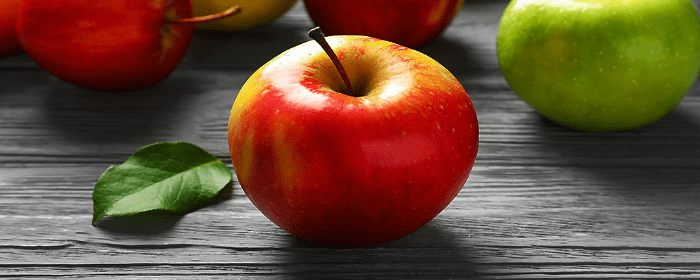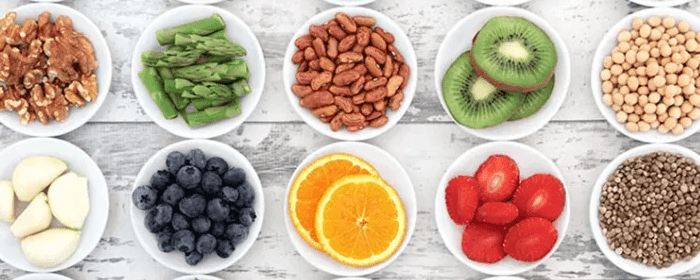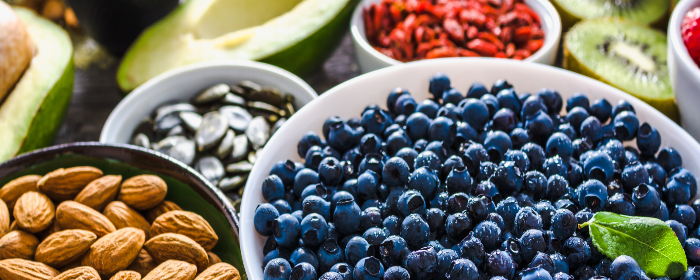
by admin | Feb 3, 2021 | Health Awareness
Music therapy uses music to promote a person’s wellbeing. It uses an individual’s connection to music to spur positive changes in mood and mental health. Music therapists may use a variety of methods to support these outcomes, such as playing instruments, singing, or dancing.
Music therapy can enhance communication skills, confidence, and self-awareness, as well as concentration and attention. Oftentimes, improvisation is also incorporated into this form of therapy.
Music & The Brain
Music affects the mind in profound ways. Each aspect of effect is processed uniquely by a specific area of the brain. For example, the frontal lobes interpret emotional signals of music, while the cerebellum processes rhythm. When listening to especially powerful melodies, the reward center of the brain known as the nucleus accumbens can even trigger physical responses, such as goosebumps.
It’s, therefore, no surprise that experts have been seeking to leverage the power of music for centuries. The first instruments are believed to date back 40,000 years, and the use of music therapy has its roots in Ancient Greece. Today, music therapy spans several disciplines and can be found in social care, private care, and educational centers alike.
What Sets Music Therapy Apart
Because it doesn’t require verbal communication, music therapy is often a powerful alternative for people who struggle with verbal communication. People with dementia, for instance, are ideal candidates for music therapy. Music can also be played in any environment; for example, patients who can’t leave their beds can still enjoy music for its mood-boosting benefits.
What Are the Benefits of Music Therapy?
On the topic of benefits, there are several compelling advantages of this therapy, including:
- Boosted memory skills
- Improved communication
- Better self-expression
- Improved ability to process complex emotions and memories
- Stronger connections to others
- Increased verbalization
- Decreased anxiety
- Greater self-esteem
Music releases dopamine, the feel-good hormone, which has short-term benefits on mood. It can also control stress hormones, including cortisol, to curb anxiety. It may be a particularly powerful tool to help children find fun and engaging ways to process thoughts and emotions.
For more health awareness blogs, please visit www.stemedix.com/blog.

by admin | Jan 6, 2021 | Health Awareness
The old adage, “An apple a day keeps the doctor away” has roots that can be traced back to the mid-1800s. Naturally, one might assume that such outdated advice would have little value today. While an apple a day indeed lacks the ability to reduce the frequency of your doctor’s visits, adding the fruit to your diet could improve your health in several ways. Here’s a look at the many benefits of apples.
Nutritional Value
Apples are highly nutritious, delivering a considerable dose of fiber at just 95 calories on average. They also have 9% of your daily value of vitamin C, which helps neutralize harmful free radicals and works to protect the body against illness. Apples also have antioxidants such as caffeic acid, quercetin, and epicatechin.
Heart Health
Regularly eating an apple could reduce your risk of several chronic illnesses, including heart disease. Experts suspect this could be due to the flavonoids in the fruit, which curb inflammation and promote heart health. They also contain soluble fiber, which helps to control blood pressure and cholesterol.
Cancer Prevention
The antioxidants in apples, including flavonoids, could help to reduce cancer risk. Eating more apples has been linked to a reduced risk of lung cancer and colorectal cancer. A diet that prioritizes fruits and vegetables could also help prevent against cancer in the stomach, lungs, colon, oral cavity, and esophagus.
In addition to the benefits listed above, regular consumption of apples supports weight management, can reduce the risk of osteoporosis, and may prevent against cognitive decline. Apples can also control the risk of diabetes and asthma.
Of course, there’s always the potential to have too much of a good thing, and rapidly increasing your apple intake may backfire. For example, the fiber in apples could lead to stomach issues, such as gas and bloating. Apples are also fairly high in carbohydrates, so people following certain diets, such as the ketogenic diet, may need to avoid or reduce their apple intake.
Ultimately, eating a varied diet with many different fruits and vegetables is likely best if you’re seeking the greatest health benefits. While you can certainly aim to eat more apples, you might also consider swapping them out with other fruits and vegetables as well—especially those packed with nutrients. Bananas, blueberries, carrots, kale, broccoli, grapefruit, spinach, raspberries, peaches, pears, pineapples, and strawberries are all good options to consider.
For more health awareness blogs, please visit stemedix.com/blog

by admin | Dec 1, 2020 | Health Awareness
Inflammatory bowel disease (IBD) is the umbrella term for inflammation of the digestive tract, which encompasses two conditions: ulcerative colitis and Crohn’s disease. In ulcerative colitis, the large intestine is affected, while Crohn’s disease can affect any area of the digestive tract. Crohn’s disease may also cause abnormal openings, known as fistulas, which are not seen in ulcerative colitis. Both conditions may lead to diarrhea and the need for surgery.
One major aspect of living with IBD is making dietary choices that reduce the risk of a flare-up. While no particular diet has been able to prevent or cure IBD, certain dietary approaches may help control symptoms. Each patient experiences symptoms differently and should work with their healthcare provider to make informed choices, but here are some basic recommendations to consider.
Identify Problem Foods
Sometimes, patients are advised to avoid entire food groups. Yet, since everyone experiences symptoms differently, there’s no need to steer clear of foods unless you know they’ve caused trouble in the past. An effective way to identify trigger foods is to keep a food journal. Eating a variety of foods is important to giving your body an ample supply of nutrients, but if a certain food can be linked to worsening symptoms, it’s likely best to avoid it and find the same nutrients elsewhere.
Try Small, Frequent Meals
Smaller, more frequent meals are often easier to digest, and may therefore be less likely to cause diarrhea. Using this approach is especially beneficial during flare-ups.
Consider a Low-Residue Diet After Flare-Ups
If you’ve recently had a flare-up, a low-residue diet may be easier for your digestive tract to tolerate. Residue refers to food that hasn’t been digested. The objective of a low-residue diet is to reduce the number of daily bowel movements, which will in turn alleviate diarrhea and stomach cramps. This diet minimizes high-fiber foods and instead focuses on refined carbohydrates, cooked potatoes without skin, and ripe bananas.
Get Your Omega-3s
Omega-3 fatty acids reduce oxidative stress and have an anti-inflammatory effect, which may help to control symptoms. If you tolerate them well, try to regularly incorporate sources of these foods into your diet, which include mackerel and salmon.
Ease In After a Flare
After a flare-up, it’s a good idea to start with liquids that are gentle on your digestive system, then reintroduce solids slowly. Diluted juices, applesauce, and oatmeal are good starting points. You may then gradually start having chicken or turkey, eggs, pasta or rice, and bread.
Consider Supplements
During and immediately after flares, your body may only be taking in limited nutrients. If your doctor approves of it, consider taking a supplement to prevent any deficiencies in key vitamins and minerals.
For more helpful health awareness articles, please visit stemedix.com/blog and search for “health awareness”.

by admin | Nov 24, 2020 | Health Awareness
Oxidative stress occurs in the body when there’s an imbalance between antioxidants and free radicals. Free radicals are molecules that have an uneven number of electrons, which enables them to react more easily with other molecules. As a result, they can trigger chain reactions in a process known as oxidation.
Antioxidants, on the other hand, can donate an extra electron molecule to free radicals without risking instability. Thereafter, the free radical will become stable, and thus less prone to start a reaction.
How Does Oxidative Stress Affect the Body?
Oxidation isn’t necessarily bad. In fact, it’s a necessary process. Yet, when the ratio of free radicals to antioxidants becomes imbalanced, oxidative stress occurs. When they’re functioning effectively and kept under control by antioxidants, free radicals play an important role in fighting off pathogens.
Yet, when there are too many free radicals and not enough antioxidants, free radicals can start damaging DNA, proteins, and fatty tissue. Over time, this damage can result in:
- High blood pressure
- Inflammatory conditions
- Atherosclerosis (the hardening of blood vessels)
- Type 2 diabetes
- Neurodegenerative illnesses
- Cancer
- Heart disease
- Accelerate the aging process
What Leads to Oxidative Stress?
It’s impossible to avoid exposure to free radicals completely. The body even produces them naturally, when inflammation occurs after exercise, for instance. Yet, you can also be exposed to unhealthy free radicals from:
- Certain chemicals, including some cleaners and pesticides
- Pollution
- Radiation
- Cigarette smoke
- An unhealthy diet with too much sugar, fat, and alcohol
How Can You Control Oxidative Stress?
Fortunately, there are many things you can do to control your exposure to free radicals. Aim to eat a variety of fruits and vegetables, as this will help give your body the nutrients it needs to create antioxidants. Fish, nuts, onion, garlic, and cinnamon may also be good choices to incorporate into your diet.
Maintaining a moderate exercise routine over a long-term basis can also help control oxidative stress levels, as can using chemicals in moderation, wearing sunscreen, limiting alcohol content, and avoiding smoking.
For more helpful health awareness articles, visit stemedix.com/blog.

by admin | Nov 10, 2020 | Health Awareness
“Superfoods” get their name from the powerful abundance of nutrients they pack, positioning them as some of the healthiest dietary choices one can make. Rich in the key vitamins, minerals, and macronutrients your body needs to perform its best, these foods offer outstanding nutritional value, allowing you to truly make your calories count. Here are a few to incorporate into your diet.
Carrots
Carotenoids, compounds linked to reduced risk and severity of inflammatory conditions, are found in many yellow, orange, and red vegetables. Yet, carrots have the lowest caloric density of all. Plus, they’re a cinch to prepare, whether you enjoy them in soups, salads, or just on their own as a snack.
Spinach
This leafy green powerhouse boasts high concentrations of omega-3 fatty acids and folate, nutrients which can reduce the risks of osteoporosis, stroke, and heart disease. The green is also an excellent source of lutein, which helps protect the eyes against macular degeneration, a leading cause of blindness.
Tomatoes
Red tomatoes are rich in lycopene, an antioxidant linked to a decreased risk of certain types of cancer and coronary artery disease. While fresh tomatoes are a good source of the nutrient, even processed tomatoes are high in lycopene, and the body may absorb it better. Consider incorporating ketchup, red sauce, and tomato juice into your meals.
Blueberries
Highly snackable, blueberries have the highest concentration of antioxidants of all North American fruit. They can help reduce cancer and diabetes risk, while fending off cognitive decline. Research even suggests they could boost cardiovascular health.
Oats
Oats are loaded with soluble fiber, which promotes feelings of satiety and helps to reduce heart disease risk. While most carbs tend to have a bad reputation, these are far from being nutritionally void like some other carb-heavy foods. The fiber helps to offset the sugar, and there is also a considerable portion of serving in each portion.
Black Beans
In general, beans support heart health. Black beans are the overachievers of the bean world, however. With anthocyanins, powerful antioxidants that enhance cognitive function, black beans support both brain and heart health. Plus, they’re a good source of protein while remaining relatively low in calories.
Walnuts
Many nuts have tremendous health benefits, but walnuts are among the best options. They’re rich in omega-3 fatty acids, which support heart health, and have a fair amount of protein. The polyphenols in the nuts also have anti-inflammatory properties.
For more health awareness articles, please visit stemedix.com/blog and search for “health awareness”.






 St. Petersburg, Florida
St. Petersburg, Florida
